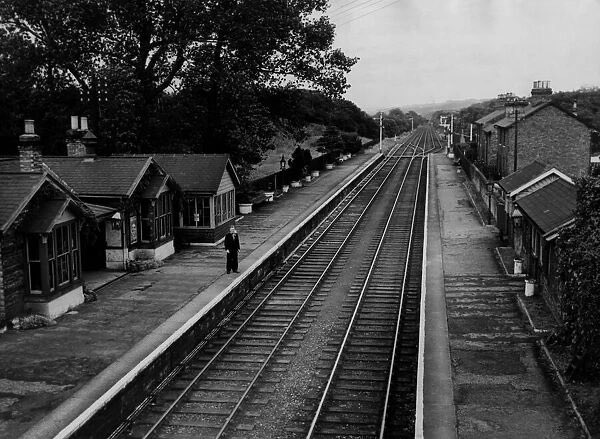
Lintz Green
Lintz Green Railway Station
Last Updated:
19 Aug 2024
Lintz Green
This is a
Railway Station
54.905078, -1.766502
Founded in
Current status is
Partly Preserved
Designer (if known):

The Station Masters House, platforms and its steps remain
This is what’s left of Lintz Green station, the platform stairs and its station masters house. This place opened in 1867, two years after construction commenced on the Derwent Valley Railway and one of seven on the whole line.
This place was barely populated upon opening. In fact, Lintz Green was just a farm so this station was certainly intended to serve the paper mill we discussed yesterday. The Station House even doubled as a post office, which tells you no such facility even existed beforehand.
The line was mainly for goods traffic, specifically coal and ore for Consett. Lintz Green got a slice of the pie with a small siding for the paper mill nearby and a seperate branch line towards a coal level in the east. South Garesfield Colliery was also very close by. However, this was pretty minor compared to the rest of the line. You wouldn’t think this though, given the station had its own waiting rooms on each platform built of solid brick and not just for purpose either - this was a very pretty station as you can see below. As per information from railway historian Rob Langham (@RailRamblings), it was originally perceived to serve passengers from the Tanfield and Stanley areas who only had goods railways and no (legal) passage on the railways.
Its quiet nature wasn't helped by the fact the road into the station was privately owned and constantly in a state of disrepair. To make matters worse, a toll of sixpence was charged by the owner for any vehicular traffic. A public meeting was held in December 1891 to organise the dispute, with vehement disagreement the consensus to the point the North Eastern Railway intervened. At some stage thereafter it was opened up.
The reason Lintz Green is well known however is because of the unsolved murder of its station master. In 1911, George Wilson was shot after closing up the office at the station. The only apparent motive must have been robbery, as even George himself didn’t know who could have shot him. It still goes down as one of the largest man hunts in the north east, with still no definitive attacker identified.
The station closed in 1953, well before Beeching which goes to show how quiet the station was. Buses on more direct routes had taken the vast majority of traffic even by the 1920s. Freight fared better with paper, milk, cattle, bricks, coke and coal still being shipped over the Derwent the 60s. The line closed some 9 years later.
Listing Description (if available)


Both Ordnance Survey maps shown here depict Lintz Green and the surrounding area between the 1890s and 1930s. They really expose just how rural this area is, with little catchment for the station except Lintzford and the farms at the top and bottom of the hill. There is very little change here in 3 decades, apart from the closing of the nearby coal level and the dismantling of the waggonway up to Lintz. The trackbed can still be seen through the fields.

Turning back the clock a little bit, here's how the area looked in 1864 just a few years before the railway was constructed. You can see how the line encouraged coal entrepreneurs to open up along the line, making it much cheaper to transport.

From the top of the station steps at Lintz Green in 2024

A similar view of the station in 1953, just after closure. Source: Media Storehouse

The station during use, perhaps the 1910s or 20s? The station building features a beautiful flower arrangement and is clearly well maintained - a valued role of the Station Master. Source: Beamish Collections
